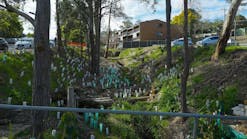Storm surges and gusting winds have led to catastrophic impacts on Alaskan communities.
The New York Times reported that initial reports of the village of Golovin in Alaska showed that up to a dozen of the 48 houses were inundated with water after the aftermath of Typhoon Merbok impacted western Alaska.
For instance, approximately 250 miles south in Newtok, a third of the population of (200 people) looked for shelter in the local school, reported The New York Times. The city of Kotzebue reported their flooded airport runway was covered in debris.
Residents living along more than 1,000 miles of coastline, who live in state’s most vulnerable communities, faced flooding and infrastructure damage. Additionally, in communities like Nome, Kotzebue and Unalakleet, and smaller, roadless villages connected by them, issues including inundated streets and homes, power outages and airport runways under water have been reported. At least a dozen other remote villages in Alaska, with a predominantly Indigenous population, have reported similar impacts, reported The New York Times.
The storm hit during prime hunting season, which residents rely on to prepare for the winter. It is likely that the oncoming winter freeze is only weeks away, which will impact reconstruction efforts greatly.
There are also reports of damaged and upturned fuel tanks, which hold the diesel fuel that powers local generators and heats homes, as well as hold the gasoline that fuels vehicles used in the hunting, according to The New York Times. Cabins used during the fishing season, drying racks and smokehouses, have also been destroyed.
Gov. Mike Dunleavy issued a state disaster declaration Sept. 17, reported The New York Times.
“In areas where hurricanes happen, FEMA provides temporary structures,” said Rhonda Schneider, the director of Nome’s Community Center, which runs an emergency shelter and operates a homelessness prevention program, reported The New York Times.
Due to the remote nature of Alaskan villages, it is not possible to transport mobile homes and temporary trailers to remote Alaska, because these villages are only serviceable by air or barge. Those affected by the storm were already facing a housing and infrastructure crisis.
According to Dunleavy in a news conference Sept. 17, Alaska deals with natural disasters on a regular basis, mentioning a long list of federal agencies that are needed as the recovery process begins, including the U.S. military and FEMA, reported The New York Times.
According to the state’s Department of Homeland Security and Emergency Management, phone conversations about recovery efforts will begin after community leaders take stock of damage.






